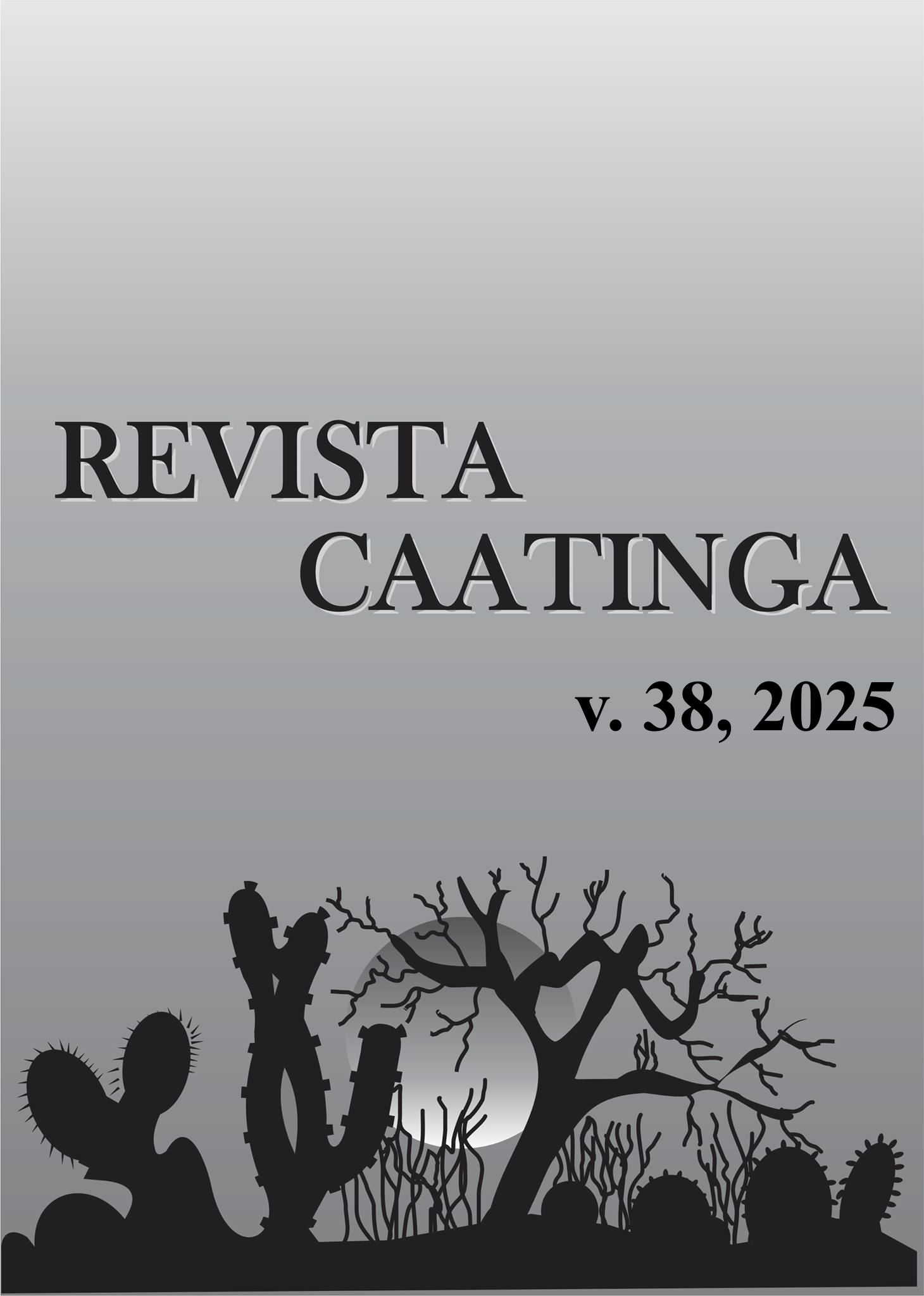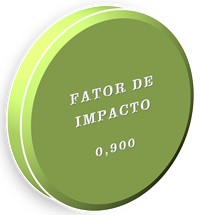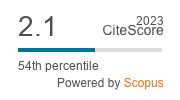Diferentes biocarvões: efeitos na fertilidade do solo e no crescimento de pimentão
DOI:
https://doi.org/10.1590/1983-21252025v3812730rcPalavras-chave:
Capsicum annuum L.. Resíduos agrícolas. Pirólise.Resumo
O uso de resíduos agroindustriais como insumo agrícola é uma alternativa sustentável para recuperar a fertilidade dos solos e aumentar a produtividade. Objetivou-se com este trabalho avaliar os efeitos de biocarvões produzidos a partir de cama de aviário, fibra de coco e palha de arroz sobre a fertilidade do solo e o crescimento de pimentão verde cultivado em campo, em um Argissolo. Inicialmente, amostras de solo foram incubadas com os três biocarvões nas doses de 0,0; 6,0; 9,0 e 12,0 t ha-1 por 160 dias, com umidade em torno de 70%. Após esse período, realizaram-se análises químicas do solo. Em seguida, foi conduzido experimento em delineamento em blocos casualizados, esquema fatorial 5 × 3 + 1 (cinco doses e três tipos de biocarvões, mais um tratamento adicional com adubação mineral), com quatro repetições. O biocarvão de cama de aviário promoveu os maiores aumentos de pH, fósforo (42,04 mg dm-3) e potássio (0,46 cmolc dm-3). O de fibra de coco também elevou o potássio (0,48 cmolc dm-3) e proporcionou maior acúmulo de matéria seca na parte aérea (33,87 g planta-1 com fibra de coco e 34,37 g planta-1 com cama de aviário), superando a adubação mineral. Já o biocarvão de palha de arroz não promoveu melhorias significativas. Assim, os biocarvões de fibra de coco e cama de aviário demonstraram potencial como alternativa sustentável para melhorar a fertilidade do solo e o desenvolvimento do pimentão.
Downloads
Referências
BAO, Z. et al. Long‐term biochar application promoted soil aggregate‐associated potassium availability and maize potassium uptake. GCB Bioenergy, 16: 1-13, 2024.
BRASIL. Ministério da Agricultura, Pecuária e Abastecimento. Manual de métodos analíticos oficiais para fertilizantes e corretivos / Ministério da Agricultura, Pecuária e Abastecimento. Secretaria de Defesa Agropecuária. Brasília, DF: MAPA, 2017. 240 p.
CARDOSO JÚNIOR, C. D. et al. Uso agrícola e florestal do biochar: estado da arte e futuras pesquisas. Research, Society and Development, 11: e55711225999, 2022.
CARNAVAL, L. D. S. C.; JAISWAL, A. K.; JAISWAL, S. Agro-food waste valorization for sustainable bio-based packaging. Journal of Composites Science, 8: 41, 2024.
DONAGEMA, G. K. et al. Manual de métodos de análise de solos. Dados eletrônicos. Rio de Janeiro, RJ: Embrapa Solos, 2011. 230 p.
FERNANDES, J. D. et al. Soil chemical amendments and the macronutrients mobility evaluation in oxisol treated with biochar. Journal of Agricultural Science, 10: 238-247, 2018.
FERNANDES, J. D. et al. Thermal treatment of poultry litter: part II. Evaluation of structural and morphological characteristics. Revista Brasileira de Engenharia Agrícola e Ambiental, 26: 680-687, 2022.
FERREIRA, D. F. Sisvar: a computer statistical analysis system to fixed effects split plot type designs. Revista Brasileira de Biometria, 37: 529-535, 2019.
GUARNIERI, S. F. et al. Coconut fiber biochar alters physical and chemical properties in sandy soils. Acta Scientiarum. Agronomy, 43: e51801, 2021.
KRZYSZCZAK, A.; DYBOWSKI, M. P.; CZECH, B. Microorganisms and their metabolites affect the content of polycyclic aromatic hydrocarbons and their derivatives in pyrolyzed material. Science of The Total Environment, 886: 163966, 2023.
LIU, X. et al. Amending biochar affected enzyme activities and nitrogen turnover in Phaeozem and Luvisol. GCB Bioenergy, 15: 954-968, 2023a.
LIU, Z. et al. Effect of Mg-modified waste straw biochar on the chemical and biological properties of acidic soils. Molecules, 28: 5225, 2023b.
LUSTOSA FILHO, J. F. et al. Biochars derived from olive mill byproducts: typology, characterization, and eco-efficient application in agriculture - A systematic review. Sustainability, 16: 5004, 2024.
NAGARAJU, K. et al. Exploring the benefits of rice husk waste: synthesis and characterization of biochar and nanobiochar for agricultural and environmental sustainability. International Journal of Environment and Climate Change, 13: 715-725, 2023.
NIU, M. et al. Biochar effectively promoted growth of Ardisia crenata by affecting the soil physicochemical properties. Plants, 13: 1736, 2024.
OBIA, A. et al. Biochar dispersion in a tropical soil and its effects on native soil organic carbon. Plos One, 19: e0300387, 2024.
ORTEL, C. C.; ROBERTS, T. L.; RUPE, J. C. A review of the interaction between potassium nutrition and plant disease control. Agrosystems, Geosciences & Environment, 7: 1-14, 2024.
REHMAN, I. et al. Evaluating the effects of biochar with farmyard manure under optimal mineral fertilizing on tomato growth, soil organic C and biochemical quality in a low fertility soil. Sustainability, 13: 2652, 2021.
REZENDE, J. et al. Adubos orgânicos regionais na produção de mudas de pimentão no semiárido piauiense. Revista Brasileira de Engenharia e Sustentabilidade, 10: 8-13, 2022.
SALES, H. A. Desempenho agronômico de pimentão sob adubação orgânica e mineral. 2021. 34 f. TCC (Graduação em Licenciatura em Ciências Agrícolas) – Instituto Federal do Espirito Santo, Campus Itabina, Itabina, 2021.
SANCHEZ, E. et al. Assessment of pistachio shell-based biochar application in the sustainable amendment of soil and its performance in enhancing bell pepper (Capsicum annuum L.) growth. Sustainability, 16: 4429, 2024.
SÁNCHEZ-REINOSO, A. D.; ÁVILA-PEDRAZA, E. G.; RESTREPO-DÍAZ, H. Use of biochar in agriculture. Acta Biológica Colombiana, 25: 327-338, 2020.
SINGH, C. et al. The effect of rice husk biochar on soil nutrient status, microbial biomass and paddy productivity of nutrient poor agriculture soils. Catena, 171: 485-493, 2018.
SUN, X. et al. Comparative transcriptome analysis provides insights into the effect of epicuticular wax accumulation on salt stress in coconuts. Plants, 13: 141, 2024.
TAIZ, L.; ZEIGER, E. Fisiologia vegetal. 5. ed. Porto Alegre, RS: Artmed, 2013. 954 p.
ZHANG, H. et al. Roles of biochars’ properties in their water-holding capacity and bound water evaporation: quantitative importance and controlling mechanism. Biochar, 6: 1-13, 2024b.
ZHANG, S. et al. Using the conditional process analysis model to characterize the evolution of carbon structure in Taxodium ascendens biochar with varied pyrolysis temperature and holding time. Plants, 13: 460, 2024a.
Downloads
Publicado
Edição
Seção
Licença
Os Autores que publicam na Revista Caatinga concordam com os seguintes termos:
a) Os Autores mantêm os direitos autorais e concedem à revista o direito de primeira publicação, com o trabalho simultaneamente licenciado sob a Licença Creative Commons do tipo atribuição CC-BY, para todo o conteúdo do periódico, exceto onde estiver identificado, que permite o compartilhamento do trabalho com reconhecimento da autoria e publicação inicial nesta revista, sem fins comerciais.
b) Os Autores têm autorização para distribuição não-exclusiva da versão do trabalho publicada nesta revista (ex.: publicar em repositório institucional ou como capítulo de livro), com reconhecimento de autoria e publicação inicial nesta revista.
c) Os Autores têm permissão e são estimulados a publicar e distribuir seu trabalho online (ex.: em repositórios institucionais ou na sua página pessoal) a qualquer ponto antes ou durante o processo editorial, já que isso pode gerar alterações produtivas, bem como aumentar o impacto e a citação do trabalho publicado (Veja O Efeito do Acesso Livre).







